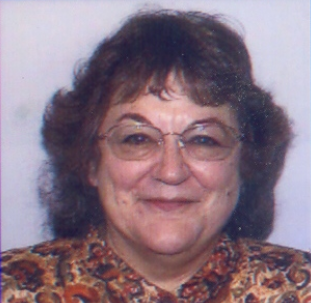The new academic year signals the initiation of a range of AHA activities, which will be taken up on a new scale and with a new intensity. Readers of Perspectives will find out more in the coming months. In this opening issue, it seems useful to provide some context for the Association’s plans by sketching the nature of the universe of the AHA as a membership organization/scholarly society seeking to refine its ability to serve its members and to remain economically viable in a rapidly changing world. We hope that readers interested in participating in any of the projects described here will write to us indicating their willingness to become involved.
As a result of the planning discussions that the Council, divisions, and committees have undertaken over the past year, the Association has established a framework for policy-making decisions and is now refining its mission statement. In the October newsletter we hope to include a draft version of the mission statement, which reflects the priorities and goals identified in the planning discussions for serving the profession and the field for several years to come. Many AHA activities will be concentrated in three areas: (1) work with departments and members on the fundamental challenges facing the field; (2) projects relating to the underlying connections among those who teach history (including public historians and K-12 teachers); and (3) publishing projects that simultaneously serve the field in new ways and provide new sources of revenue for the organization.
Altered economic conditions provide the frame for many of the greatest challenges facing historians in the academy. Downsizing has begun to take a variety of forms, from reduction of departmental lines and increasing reliance on part-time and adjunct faculty, to demands to rethink curricular programs and to use new technologies to deliver information to increased numbers of students at lower costs. The AHA hopes to work through new collaborations with history departments and other national organizations to address these kinds of issues. Among AHA activities this next year, for example, will be leadership of a national effort involving the American Council of Learned Societies (ACLS) as well as other national educational organizations to provide guidelines and some campus-based experiments in the use of part-time and adjunct faculty.
In addition to surveys and other information-gathering we will do this year, we will facilitate focused discussions on these issues at the annual meeting. In New York this January, a session on downsizing will be followed by a more general discussion at the department chairs’ luncheon on strategies and future activities that can be undertaken collaboratively to protect and define the values central to history learning. We are also entering a new phase in an American Association of Higher Education (AAHE) project on the peer review of teaching: this coming year several departmental efforts will be focused on the building of faculty portfolios that demonstrate the connections between teaching and research. (See pp. 21-22 of the March 1996 issue of Perspectives and pp. 29–30 of the April 1996 issue of Perspectives for reports about earlier phases of the AAHE project.)
Other AHA efforts focused on teaching will enable us to underscore the connections among teachers of students at all levels. We will be developing a new project on the survey course (world history and American history in a global context) that will help foster regional consortiums of community-college and four-year faculty. Each regional group will define its own goals and strategies, but all of the groups will emphasize active learning, work with primary sources, and the connections between teaching and research. We expect the relocation of the National History Education Network (NHEN) to galvanize our work with K–12, as well as our focus on content partnerships and advocacy activities. (See p. 5 of the September 1996 issue of Perspectives for an article about the new leadership of NHEN.)
Finally, the range of publishing projects we are now exploring reflects the AHA’s interest in fostering and disseminating new scholarship in both print and electronic formats. Our pamphlet series will be expanding significantly over the next three years and will be offered both in traditional, inexpensive print forms and in enhanced electronic forms through our home page on the World Wide Web. We are also exploring possible electronic teaching tools, especially a world history “text” and a guide for undergraduates about using primary source materials. In addition, we are working with partners (including university presses, librarians, and other scholarly societies) on potential solutions to the crisis in academic publishing that has endangered the monograph as the primary form of scholarly communication. Underlying all of these projects, as they bridge the gap between print and electronic dissemination, is a set of larger issues regarding the ability to protect and perpetuate in new forms the key functions involved when scholars communicate with each other in print. We are also, therefore, investigating what historians may need to do to enhance forms of electronic communication to ensure that what we have valued most about print finds parallel and complementary functions in digital form.
In the course of exploring these new forms of member services and the creation of new publications, we hope to strengthen our ties to individual members. In recent months ACLS societies have been investigating the implications for their futures of the changing economic and technological circumstances they face. It seems clear that the AHA will only survive by demonstrating to members the tangible benefits they receive, both as individuals and as participants in a larger field. We hope over the course of this year, through this column and other articles in Perspectives, to show you just that.

